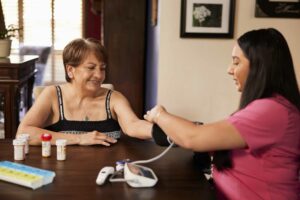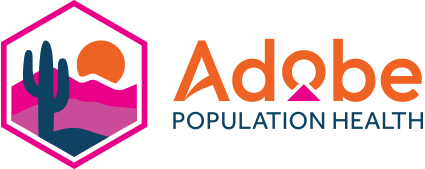Social determinants of health (SDOH) play a significant role in health disparities and inequities in the U.S., leading to poorer outcomes and increased mortality. In fact, up to 80% of health outcomes are driven by SDOH, and its impact is evident: 10.2% of U.S. households experience food insecurity at some point annually, 5.1 million households have very low food security, 37.9 million people live in poverty, and one-third of Americans are unsure about accessing medical care when needed.
While federal programs address some aspects of SDOH, other care management organizations struggle. The siloed nature of resources, lack of technology-based interoperability, and misaligned financial incentives hinder comprehensive approaches. As a result, SDOH factors often go unnoticed by providers and health plans due to limited data utilization and the challenges of coordinating support across geographic areas.
Building a more effective care model for the future

In 2016, I contracted with an insurance company to launch a wholistic case management initiative for Medicare members, launching the Adobe Care Management (ACM) model. The ACM model offers a wholistic approach led by nurses, driven by technology, and focused on the individual including services such as Proprietary Risk Stratification, Health Risk A
ssessments, Care Gap Resolution, SDOH Intervention Support, and Transitional Care Management.
To build a more effective care model for the future, it is essential to overcome the limitations faced by health plans and providers in addressing SDOH. Many lack access to the necessary data to create a wholistic view of patients and members, and practices struggle financially to incorporate social needs into treatment. Without a comprehensive understanding of SDOH factors, health plans are ill-equipped to manage risk, costs, and the health of the populations they serve.
The ACM model leverages both technology and a human touch to create an integrated, wholistic program that prioritizes the individual. Patients and members benefit from improved health and quality of life, while providers see increased STARS ratings and improved value-based reimbursement. Health plans gain access to more comprehensive data, leading to improved Medical Loss Ratio (MLR) scores, healthier members, reduced costs, and more effective risk stratification. Communities benefit from healthier citizens, lower costs, and better utilization of available social services.
Proprietary risk stratification and health risk assessments
The ACM model employs a proprietary risk stratification tool that reviews algorithm-driven data to identify individuals at the greatest risk of hospitalization. These high-risk individuals are contacted within 30 days, resulting in a 10% decrease in hospitalization rates. The initial step involves a short survey conducted by the care team in the patients’ homes to identify SDOH barriers and gaps in care – crucial, as 80% of hospitalizations are related to SDOH.
The MASLOW™ app gathers gap data and presents an individual’s needs as a pyramid, with SDOH factors forming the foundation. MASLOW™ automatically identifies local social support resources for food, shelter, transportation, mental health, and other services. This information is then shared with the patient through text or email, and an Adobe social worker is notified and schedules a contact. MASLOW™ facilitates connections between members and personalized resources, while the Adobe EMR retains this information and generates reports, conducts analyses, measures results, and proactively removes barriers to care.
Care gap resolution and SDOH support
The ACM model emphasizes a team approach. Nurses, nurse practitioners, social workers, support coordinators, dieticians, care navigators, and transition specialists leverage technology to deliver personalized care. The team conducts home safety assessments of those identified as high-risk to identify gaps or disparities, then works together to proactively monitor and address these challenges in the patient’s living environment.
The personalized preventative care plan is based on individual needs and includes telehealth, in-person screenings, check-ups, and comprehensive wellness assessments. Information is tracked to validate positive changes, enhance health literacy, and support the management of chronic and acute conditions.
One in five patients experience an adverse event within three weeks of discharge, but the Adobe interdisciplinary team’s continuous monitoring, assessment, and communication play a critical role in improving adherence, reducing complications, and preventing re-hospitalizations.

Innovative technology
The model relies on innovative technology to overcome existing limitations. Adobe developed a proprietary Electronic Medical Record (EMR) system, as existing EMRs were incompatible with this comprehensive approach to care management. Salesforce and MuleSoft product suites were utilized to facilitate data communication between Adobe and health plan partners. Real-time reporting, includingSDOH factors captured
through risk stratification tools and the MASLOW™ database, became more accurate through the bi-directional bridge, saving time and resources by eliminating manual record entry.
Outcomes
The value-based care model places financial risk on outcomes, and the ACM model’s hyper-individualized care experiences lead to improved access, outcomes, and quality of life. By enhancing health management, health literacy, and care coordination, the model reduces complications and costs while encouraging reinvestment in front-end SDOH services such as food pharmacies and transportation.
Currently, more than 400,000 people participate in the ACM model, which has resulted in significant improvements. Over a two-year period, there has been a 75% decrease in ER claims, a 33% reduction in claim costs (year-to-year data comparison), a 23% decrease in pharmacy claims (quarterly data comparison), and a 9% reduction in hospital readmission rates.

